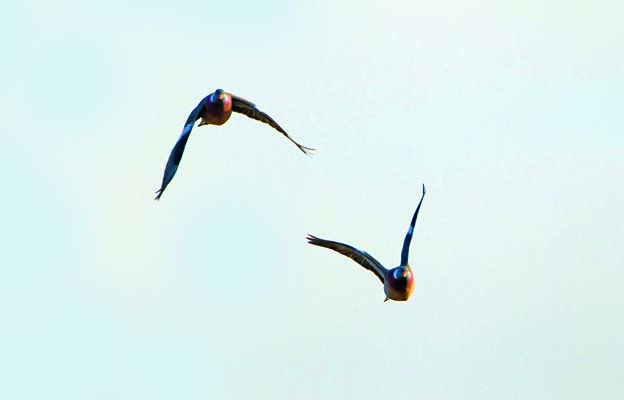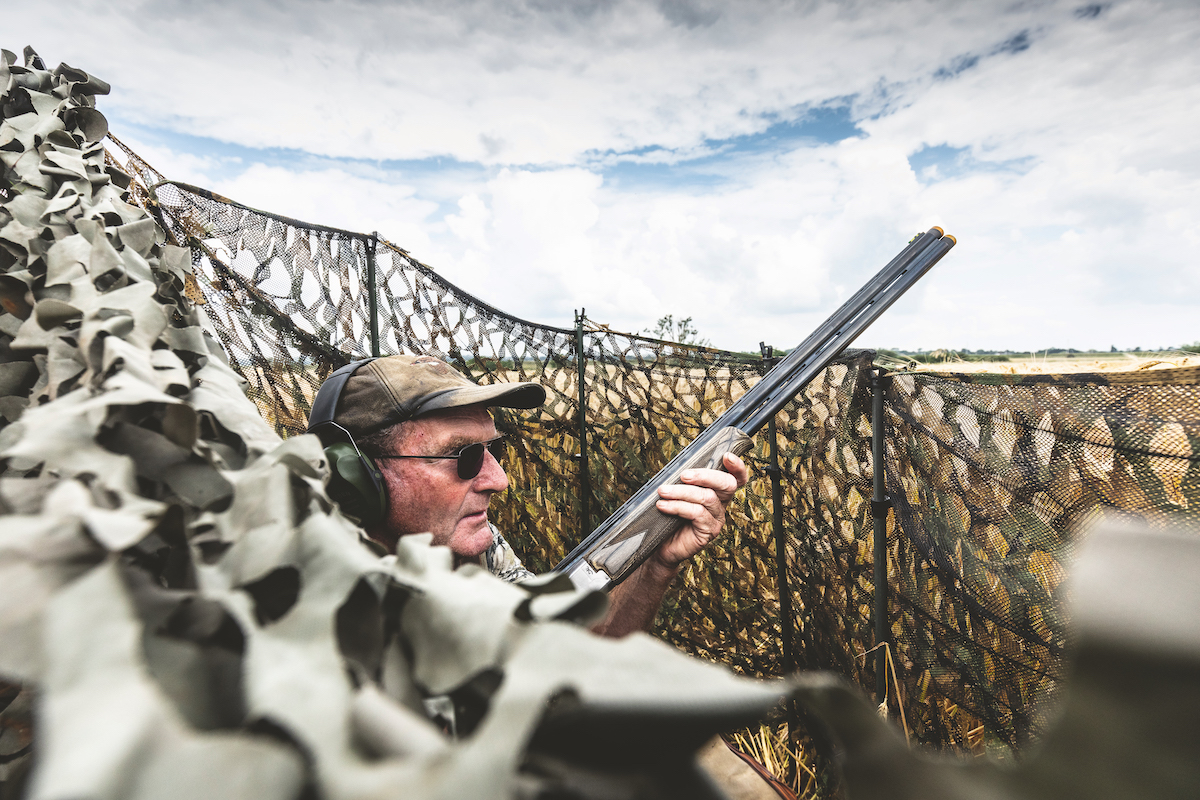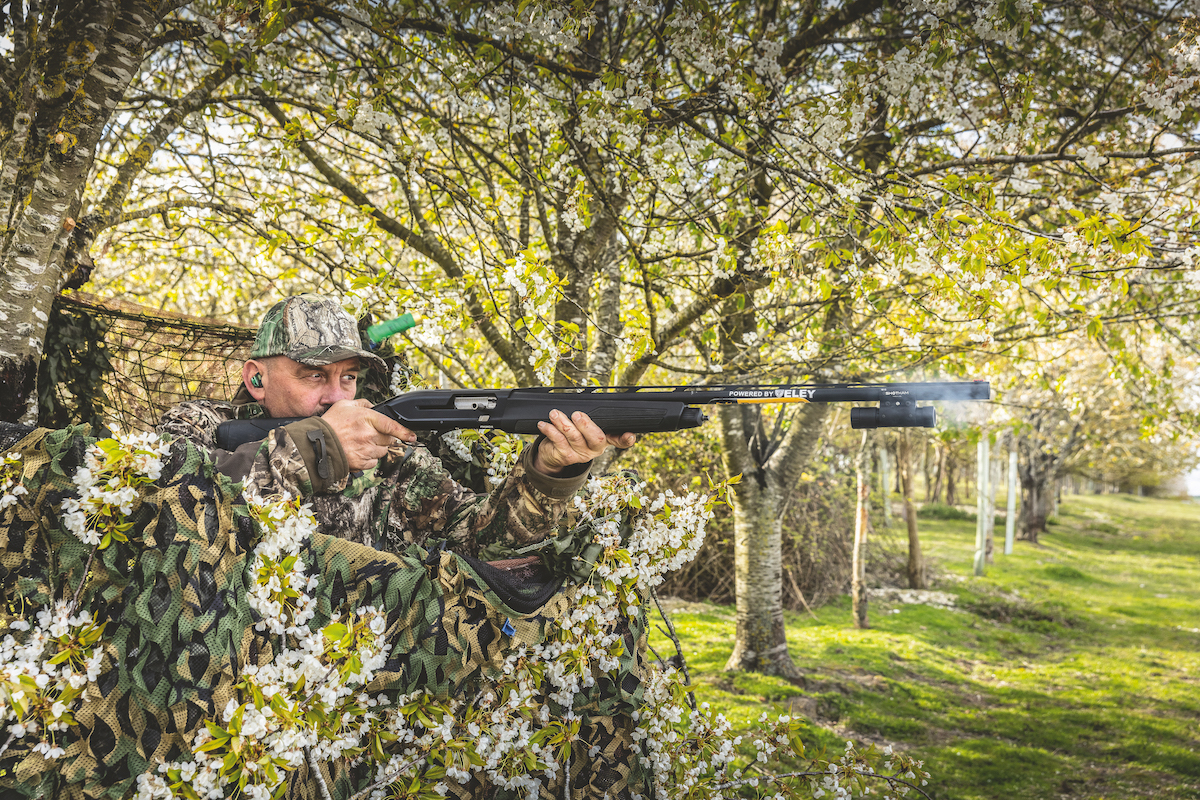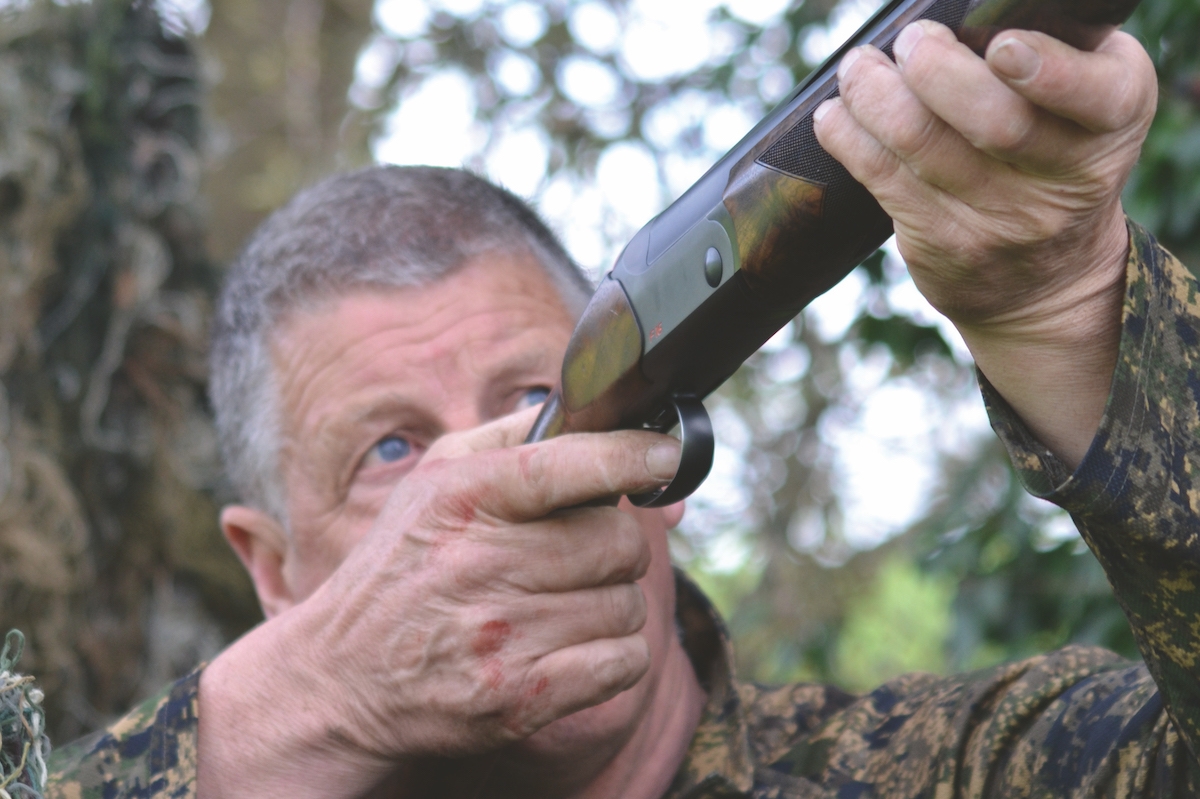Pigeon shooting: The flightline factor
Finding a flightline is at the heart of any successful day. Richard Gray shares his top tips on how to use them to your best advantage.
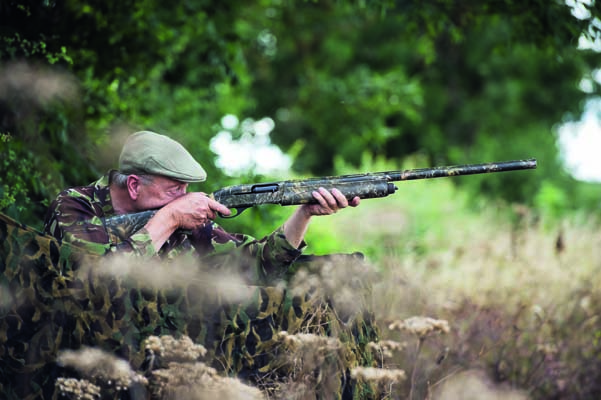
Richard Gray shooting pigeons
Like so many pigeon shooters, I have been in pursuit of Britain’s greatest sporting bird for more years than I care to remember. My enthusiasm has not diminished with the passing of time. My first experience of having some birds to decoy, however, was more by accident than design.
I was 15 and working on a farm, having just left school. Saturday morning was part of the normal 45-hour working week in 1965, finishing at 1pm. On one such afternoon I wandered off — armed with my father’s old hammergun and a dozen Blue Rival cartridges in my pocket — in the hope of a shot at something. I found a couple of small fields that had just been drilled with spring barley.
I use the term “drilled” loosely because, in fact, it had been broadcast on the top with a spinner and then harrowed in. This was fairly normal practice back then, when many small farmers did not own a drill.
It was also fairly common to retain some of the previous year’s seed rather than go to the expense of buying proper seed corn. Consequently, large amounts of seed were always visible on the top and were a huge draw for crows and, of course, pigeon.
At that time I knew nothing about decoying and, on reaching the field, I stood by a large thorn bush in the hope of getting a passing shot at something, but mainly just to keep the pests away. I had not been there more than a few minutes when a woodie came within range and a lucky shot brought it down about 30 yards out. It fell face down and, as I reloaded, another came over the hedge from my left and tried to land by the one I had just shot. What a stupid bird, I thought, as it quickly joined
its companion. Two with two shots; I was on a roll and could not believe my luck.
Within half an hour I had used up my dozen cartridges and had eight pigeon in the bag. What a haul — never had I shot such a bag before. As I made my way home, laden with the fruits of my labours, I was hooked. But why had those pigeon all come from the same direction and in the same way? It appeared that they were coming from a small copse about two fields away and had all followed the same line. This, I was to discover, was my first experience of a pigeon flightline and how it worked.

A clearly defined flightline along a valley bottom: it was narrow, which made it easy to shoot, and came directly from a wood about a quarter of mile away
The key to success
We now know, of course, much more about the habits of this bird and it is the flightline that is at the heart of any successful day in the hide. Fifty years on and I am still in thrall to the flightline and how it works, but I’ve seen a great change in the way that flightlines work and how they help us to put birds in the bag.
So much has been written and said about flightlines that there might not be much to add. But I believe that pigeon habits change and continue to evolve just as the way we shoot them has changed. We now have so much more equipment and technology available to us that we need a truck just to carry all our kit.
You could probably set up on any field in England on any given day and shoot a few pigeon, such are their numbers in the countryside today. So how do we find this magical and elusive thing that will make or break our best efforts?
The first thing is to find a food source. Gone are the days of my youth when spring drilling provided weeks of steady shooting. All too frequently now, birds will find a food source, clear it up in one day and move on, so finding a flightline becomes more difficult.
Thirty years ago I would scout the day before and could be fairly confident that nothing would change overnight. Nowadays, a flightline might last an hour before the birds realise that it’s safer elsewhere or the food source dries up. All too often we might arrive at a field with 500 birds feeding on it, but there’s no discernible flightline coming on to the field. This makes it difficult to choose a spot on which to set-up, with birds floating in from all directions with no obvious pattern. After two shots they disappear and do not return.
Birds are wiser now
I think birds are much wiser now, having evolved their feeding habits as fast as we develop ways of getting them into range. I no longer use my rotary as a matter of course because birds seem to fear it most of the time. I only use it if all else fails to get their attention.
So how do we recognise a flightline rather than just seeing a few birds moving about? If even a single bird is seen flying leisurely from one point to another it could be a sign of a flightline. Watch the bird until it is out of sight, then watch for at least five minutes to see if any others follow the same line.
If they do, you need to find out where they are going. Having found the food source, you can then see if a proper flightline is establishing itself.
Finding a flightline
- If you know your ground, pigeon will often use a regular line from a roost or rest area. This may be along a hedge or treeline or a valley bottom.
- If groups of birds are seen leaving a wood and travelling along a similar line, it could be a flightline to a feeding area.
- Flightlines do not always go in straight lines, but can deviate hugely depending on wind and terrain.
- Flightlines can stop abruptly or move for no apparent reason or can be hundreds of yards wide.
- Your shooting can stop a flightline, especially if the sound of your shots can be heard from the roost wood.
- Strike while the iron is hot — if birds are feeding, shoot now if possible. Don’t wait until tomorrow; tomorrow might be too late.
- As the great pigeon shooter and author Archie Coats once said: “Time spent on reconnaissance is never wasted.” Better to spend one hour watching and set up in the right place than watching for five minutes and be in the wrong place.


